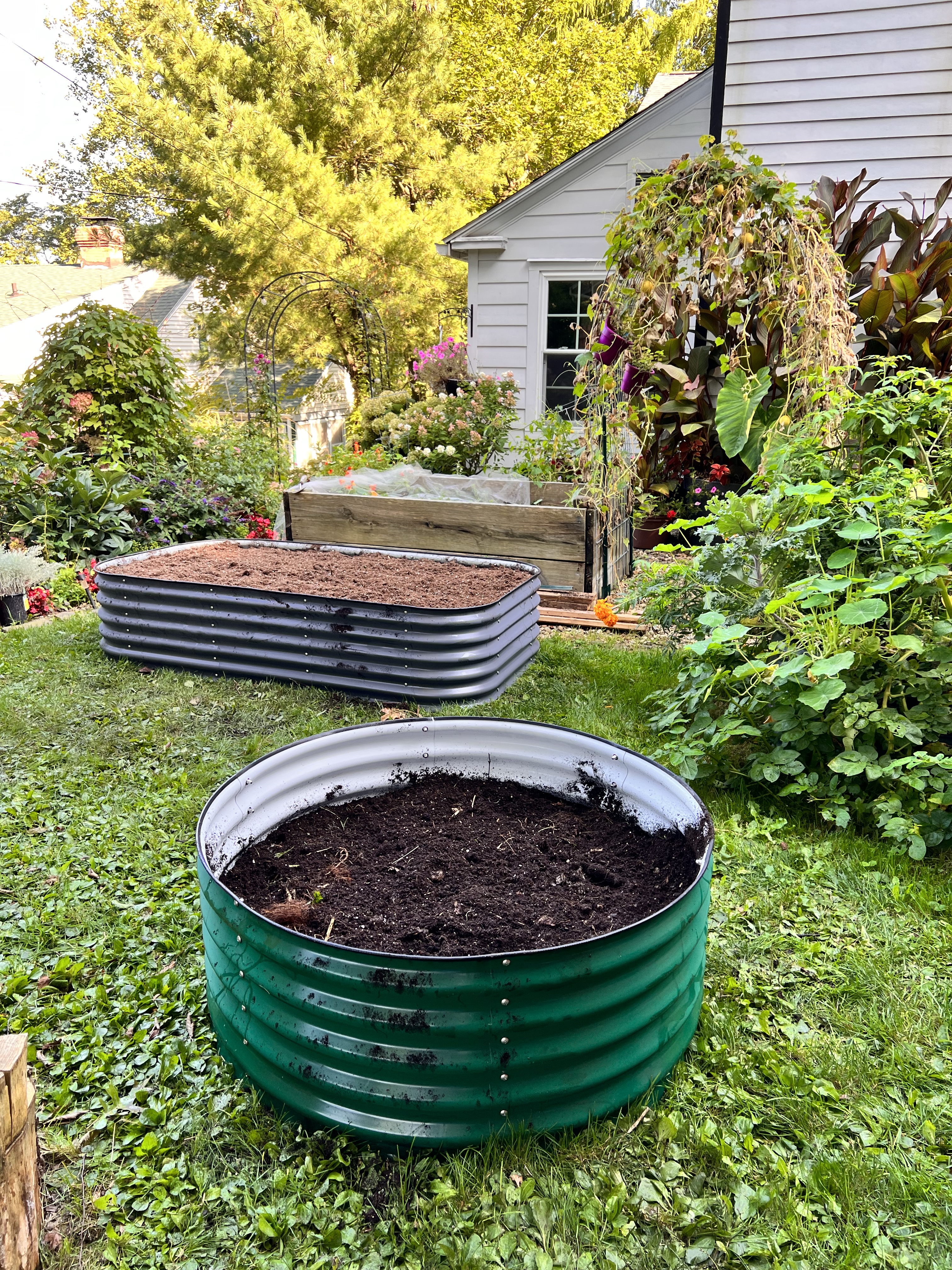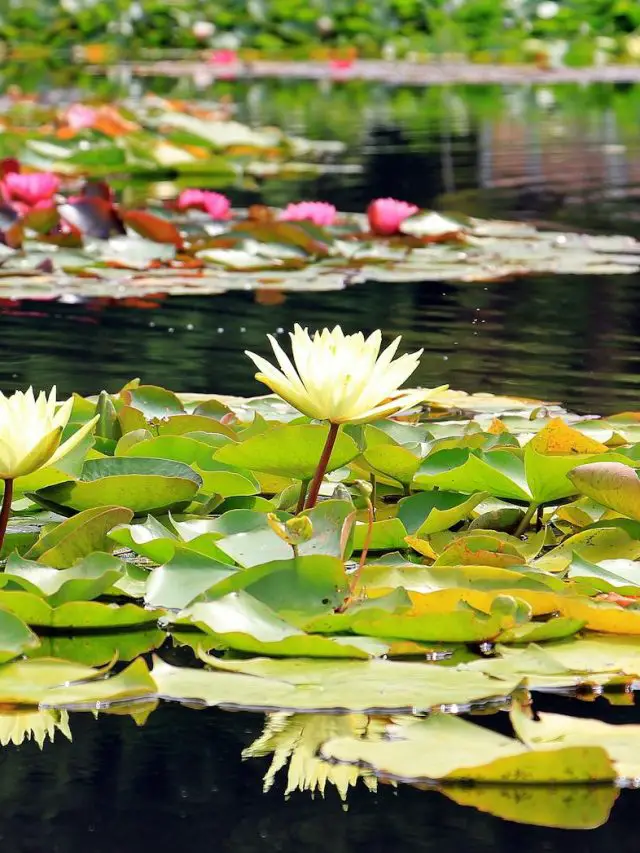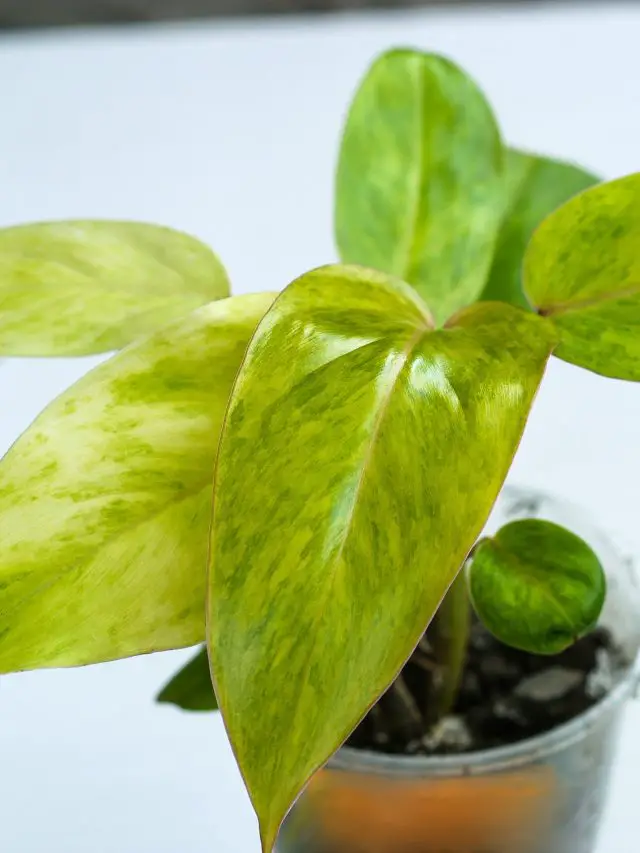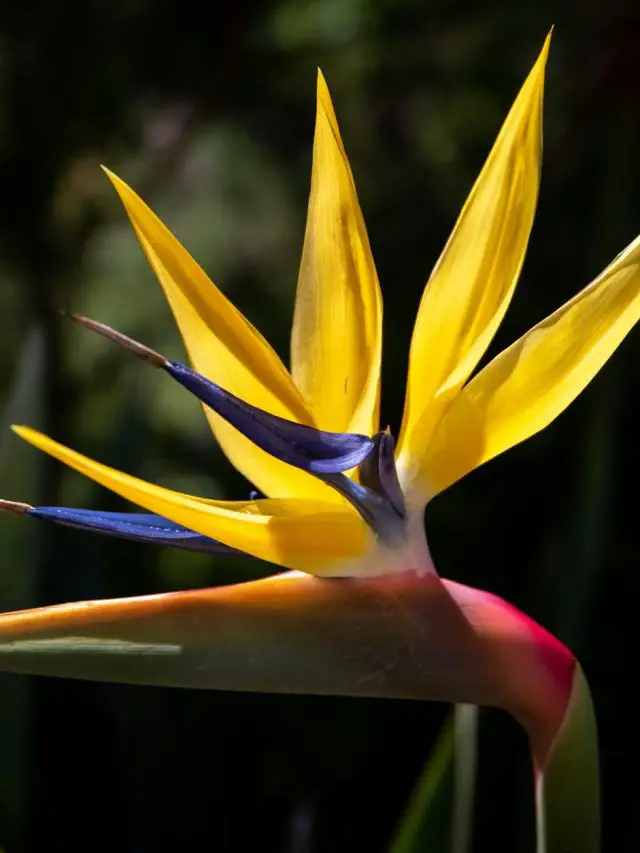How to grow Begonia Maculata | Polka Dot Plant Care Guide

The Begonia Maculata otherwise known as the polka dot plant, polka dot begonia or angel wing begonia is a gorgeous tropical plant. It has dark green beautiful leaves with white polka dots and can produce small white or pink flowers. With proper care, begonia maculata can thrive indoors and add a touch of elegance to your home. It’s growth is similar to a bamboo cane which is how it also gets the name cane begonia. So how do you grow this begonia of many names? Pretty easily actually. Keep reading to learn how.

History
The polka dot begonia is a native plant of southeast Brazil. It was first discovered and described in 1882 by Italian botanist and explorer Giuseppi Raddi, who was captivated by the plant’s unique appearance. He named it Begonia maculata, with “maculata” meaning “spotted” in Latin, reflecting the plant’s distinctive markings.
The polka dot begonia gained popularity as a houseplant in the early 20th century, appreciated for its easy-care nature and attractive foliage. It gained widespread popularity in the 1960s and 1970s, becoming a common sight in homes and offices across Europe and North America.
Today, the polka dot begonia remains a popular houseplant choice, valued for its decorative appeal and adaptability to various indoor environments. It is known for its tolerance of low light conditions and its ability to thrive in a wide range of temperatures.
With its attractive foliage, ease of care, the polka dot begonia is a popular choice among houseplant enthusiasts, adding a touch of elegance and natural beauty to homes and offices worldwide.
How to Grow Begonia Maculata
Light
The begonia Maculata plant does well in bright indirect sunlight. To make sure your plant gets enough light place it within a few feet of a window. Some direct sunlight is ok but be careful of the intensity of the light. Meaning and east facing window is going to have less intense direct sun while a west facing window will be stronger more intense light.
If your home is lacking bright light you can add grow lights. Grow lights are so helpful on darker days or in that dark areas of the house that needs a plant.
This plant will also do well in a lower light area as well just be sure the plant is getting some light throughout the day. In lower light this plant can become very leggy and loose foliage so just be careful keeping this plant in low light for long periods of time.
Begonia Light Requirement and tips:
- Choose the Right Window: Place your begonia maculata near an east- or west-facing window. These windows provide ample indirect light throughout the day, avoiding the harsh midday sun that can damage the leaves.
- Avoid Direct Sunlight: Direct sunlight can be too intense for Begonia Maculata, causing leaf burn and discoloration. If your plant receives direct sunlight, consider filtering the light with sheer curtains or blinds.
- Rotate the Plant: Regularly rotate your begonia maculata to ensure all sides of the plant receive even light exposure. This will prevent legginess and promote symmetrical growth.
- Supplemental Lighting: If natural light is limited, consider using a grow light to provide additional illumination. Place the grow light at an appropriate height and adjust the intensity to mimic bright, indirect sunlight.
- Observe the Plant’s Response: Monitor the plant’s appearance to determine if it is receiving adequate light. Stretched or leggy growth indicates insufficient light, while pale or yellowing leaves suggest too much light.
- Adjust Lighting Based on Seasons: As daylight hours change throughout the year, you may need to adjust the plant’s position or the intensity of the grow light to maintain optimal lighting conditions. In winter you may need to provide more light and in spring and summer less.
Water
It’s a good habit to check your begonia weekly to see if it needs water during the spring and summer. If the soil looks dry, dig around to see if its dry an inch or two down. If it is, you can give it some water. This Plant stores water in its canes so it is very forgiving should you forget to water or want to go longer between waterings like during winter.
In the winter months your plant may need less water depending on how dry your home is and if the plant has gone dormant. Many houseplants slow down growth during the winter. They still grow but much slower.
Properly watering your Begonia maculata is essential for its health and growth.
How to water your Begonia Maculata:
- Check the soil moisture: Before you water, it’s crucial to check the soil moisture level. Use your finger to feel the top inch or two of the soil. If it feels dry to the touch, it’s time to water.
- Choose the right water: Use room-temperature water. You can also use water from your dehumidifier. Distilled water works great also!
- Water thoroughly: Water the plant slowly and deeply until water runs out of the drainage holes. This will ensure that the entire root zone is evenly moistened.
- Avoid overwatering: Overwatering is a common cause of begonia maculata problems, including root rot. Allow the top inch or two of the soil to dry out slightly between waterings. The stems (canes) store water so allowing the plant to dry up a bit is ok but keep a close eye for wilting and stress.
- Bottom watering: Bottom watering is a gentle method that can help prevent leaf spots and fungal diseases. Place the pot in a shallow container filled with water, allowing the water to soak up through the drainage holes. Once the pot feels heavy then you know it has absorbed enough water.
- Adjust watering frequency: Watering frequency will vary depending on factors like pot size, soil drainage, temperature, humidity, and light levels. During the growing season (spring and summer), you may need to water every 3-5 days. In the winter, reduce watering to once a week or two.
- Observe the plant: Pay attention to the plant’s appearance to determine its watering needs. Wilting leaves indicate underwatering, while yellowing or drooping leaves suggest overwatering.
For winter houseplant care tips read this!
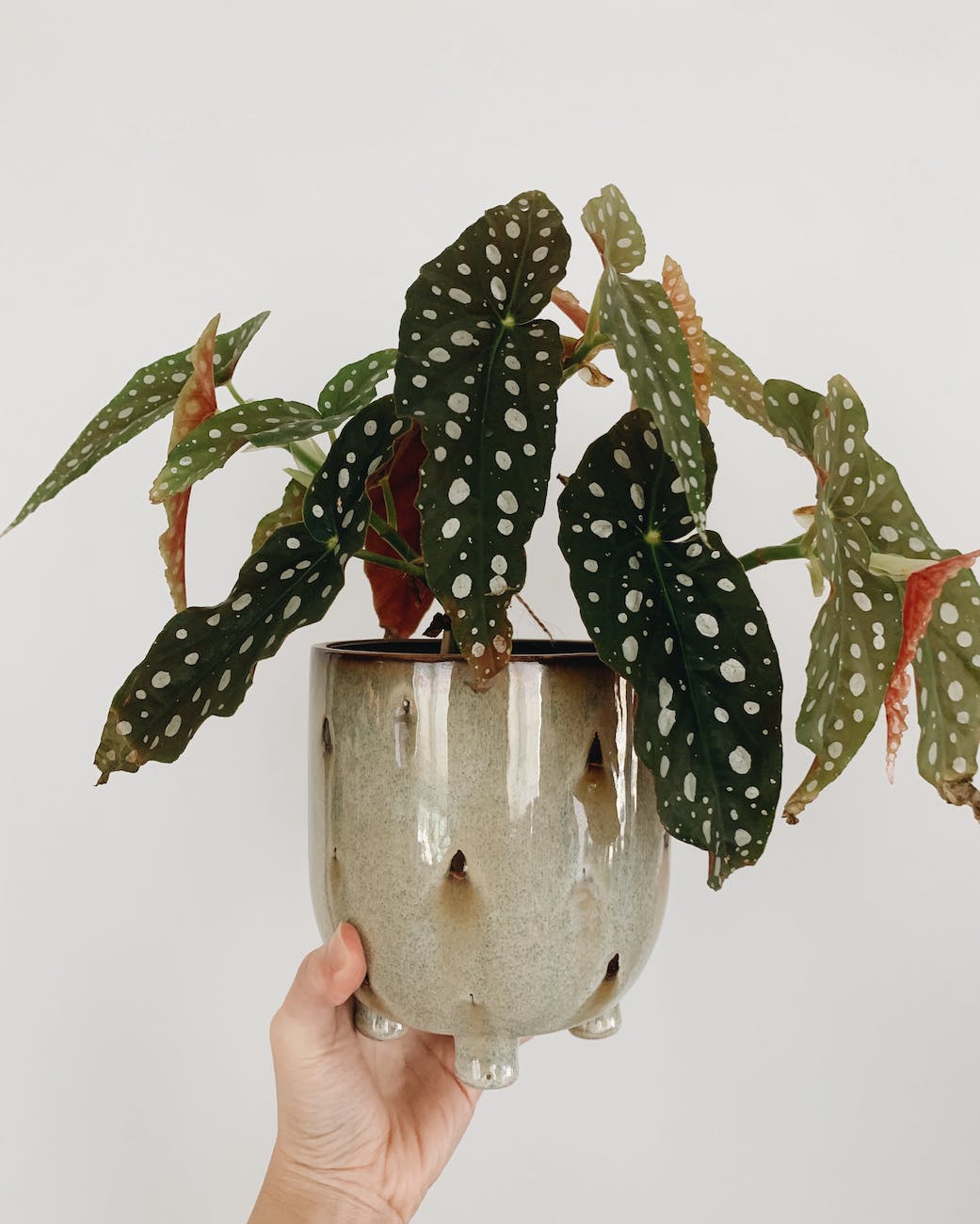
Humidity
Maintaining proper humidity is crucial for the health and growth of Begonia maculata, as it is native to humid rainforests and thrives in humid conditions.
How to add humidity for your plants
- Pebble tray: Place the pot on a tray filled with pebbles and water. As the water evaporates, it will increase the humidity around the plant. Ensure that the pot’s base doesn’t touch the water to prevent root rot.
- Misting: Mist the leaves of the Begonia maculata gently with room-temperature water every 1-2 days, especially during dry periods. Avoid misting in direct sunlight, as this can cause water droplets to magnify and burn the leaves.
- Humidifier: *The best option*Use a cool-mist humidifier near the plant to maintain a constant humidity level between 40-50%. Place the humidifier at a distance to avoid waterlogging the soil.
- Grouping plants: Place the Begonia maculata near other houseplants to create a microclimate of higher humidity. Plants release moisture through transpiration, collectively increasing the humidity around them.
- Bathroom placement: If possible, consider placing the Begonia maculata in the bathroom, as bathrooms tend to have higher humidity levels due to showering and bathing.
- Avoid placing near heat sources: Keep the Begonia maculata away from radiators, heat vents, or fireplaces, as these can dry out the air around the plant.
Remember to monitor the plant’s response to these humidity-increasing methods. If the leaves start to appear limp or develop brown spots, reduce the frequency of misting or humidity adjustments. A great way to monitor the humidity in your home is with a Hygrometer.
Soil
The Begonia Maculata loves a well-draining soil mix. The best soil for Begonia maculata is a well-draining, light, and airy potting mix that is rich in organic matter.
Soil recommendations:
- Commercial potting mix: A good quality commercial potting mix specifically designed for African violets or other gesneriads is a great option. These mixes are typically light, well-draining, and contain the right balance of nutrients for begonia maculata.
- DIY potting mix: You can also create your own potting mix by combining equal parts of peat moss, perlite, and orchid bark. This mix is lightweight, well-draining, and provides good aeration for the plant’s roots.
How to plant a Begonia maculata:
- Choose a pot: Select a pot that is 1-2 inches larger than the root ball of your Begonia Maculata. It’s important to avoid overcrowding the roots, as this can hinder growth and increase the risk of root rot.
- Fill the pot: Fill the pot about two-thirds full with the prepared potting mix.
- Remove the plant from its nursery container: Gently loosen the roots of the Begonia Maculata by massaging the root ball.
- Position the plant in the pot: Place the begonia maculata in the center of the pot, ensuring the roots are evenly distributed.
- Fill the pot with potting mix: Fill the pot with the remaining potting mix, gently firming it around the base of the plant to provide support.
- Water the plant: Water the begonia maculata thoroughly until water runs out of the drainage holes. This will help settle the potting mix and provide the plant with a good start.
- Place the pot in a suitable location: Choose a bright location with indirect sunlight, ensuring the temperature is between 65-75°F (18-24°C).
Fertilizing Begonia Maculata
Fertilize during the growing season which is spring through fall. Organic fertilizers tend to be my go to for all plants with my favorite being fish emulsion. Fertilize weekly during the growing season and give an extremely diluted amount during winter.
Fertilizing your Begonia Maculata regularly will provide it with the essential nutrients it needs for healthy growth and vibrant foliage. Here’s a guide on how to properly fertilize your Begonia Maculata:
Fertilizer Choice:
- Type: Use a balanced liquid fertilizer diluted to half strength. You can find fertilizers specifically designed for African violets or other gesneriads, which are suitable for Begonia maculata.
- Frequency: Fertilize your Begonia maculata every 2-4 weeks during the spring and summer, which are its active growing seasons. Reduce or stop fertilizing during the fall and winter when the plant has slowed down growing.
Fertilizer Application:
- Water the plant thoroughly: Before fertilizing, water the Begonia maculata thoroughly until water runs out of the drainage holes. This will ensure the fertilizer is absorbed properly by the roots.
- Dilute the fertilizer: Follow the instructions on the fertilizer label to dilute it to half strength. This will prevent over fertilization, which can damage the plant’s roots.
- Apply the fertilizer: Pour the diluted fertilizer into the pot, ensuring it reaches the base of the plant. Avoid pouring directly onto the leaves or crown of the plant.
- Monitor the plant’s response: Observe the plant for any signs of over fertilization, such as leaf burn or discoloration. If you notice any negative reactions, reduce or stop fertilizing and flush the soil with water to dilute the fertilizer.
Remember, it’s better to under fertilize than to over fertilize your Begonia Maculata. Too much fertilizer can harm the plant’s roots and hinder its growth.
Top 5 Fertilizers Perfect for Begonias
Here are the top five fertilizers for begonias available on Amazon:
- Miracle-Gro Water Soluble African Violet Food: This fertilizer is specifically designed for African violets, which are closely related to begonias. It contains all of the essential nutrients that begonias need to thrive, including nitrogen, phosphorus, and potassium.
- Espoma Begonia and African Violet Plant Food: This fertilizer is another great option for begonias. It is made with natural ingredients, including fish meal and bone meal, and it is also formulated to provide slow-release nutrients that will feed your plants for up to 3 months.
- Neptune’s Harvest Fish and Kelp Emulsion: This fertilizer is a liquid fertilizer that is made with fish emulsion and kelp. It is a good source of nitrogen and phosphorus, and it also contains trace minerals that are beneficial to begonias.
- Superthrive Vitamin Solution: This fertilizer is a liquid fertilizer that is made with a blend of vitamins and minerals. It is a good option for begonias that are looking for a boost of nutrients.
When choosing a fertilizer for your begonias, it is important to consider the specific needs of your plants. If your begonias are growing indoors, you may want to choose a liquid fertilizer that is easy to apply.
If your begonias are growing outdoors, you may want to choose a granular fertilizer that will last longer. No matter which fertilizer you choose, be sure to follow the instructions on the label to avoid over fertilizing your plants.
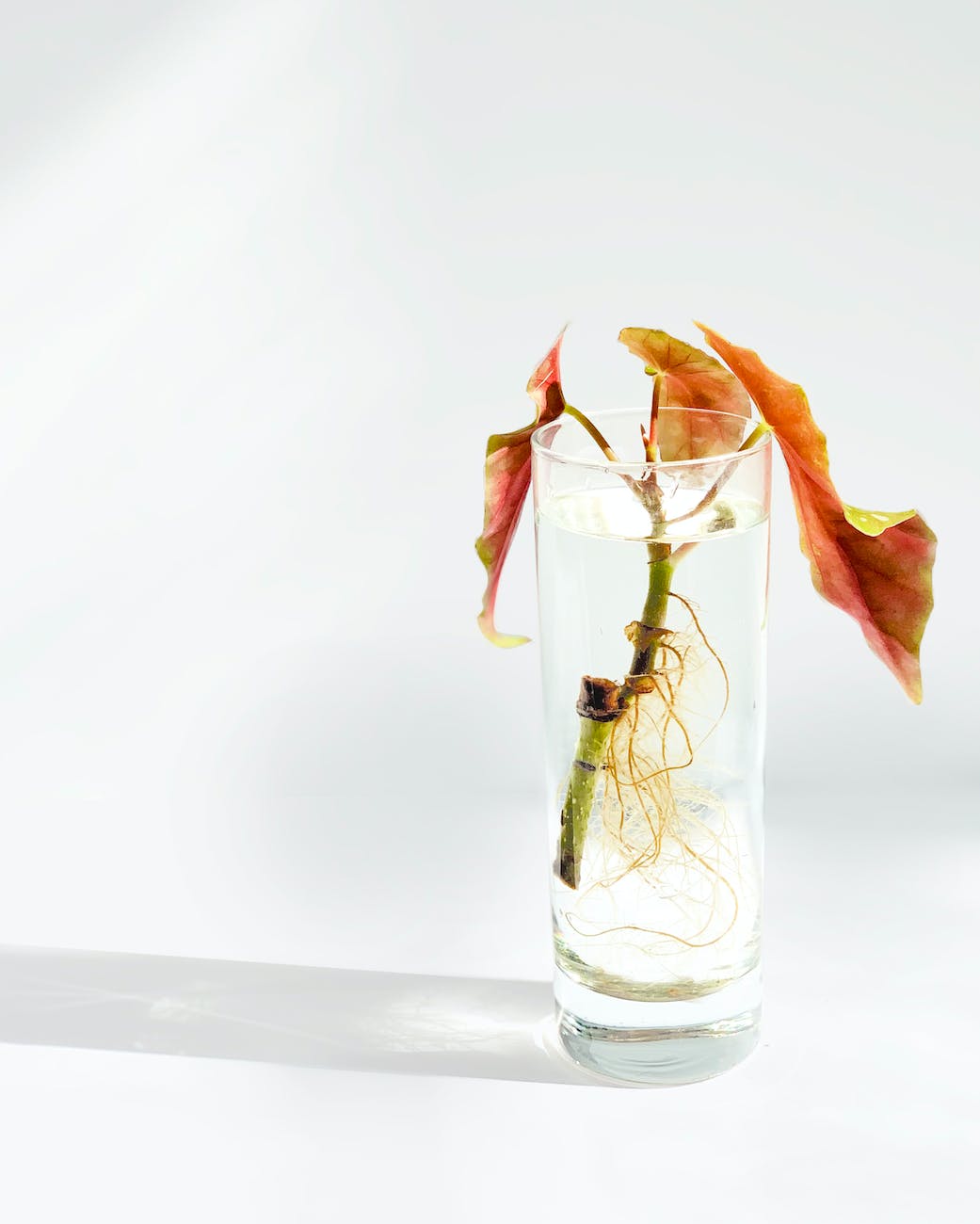
Propagating Begonia Maculata
Propagating Begonia Maculata is a simple and rewarding process that allows you to expand your plant collection or share this lovely foliage with friends and family.
How to propagate Begonia Maculata using stem cuttings:
Materials:
- Sharp scissors or pruning shears: Use sterilized scissors or pruning shears to ensure clean cuts and prevent the spread of diseases.
- Rooting hormone (optional): Rooting hormone can encourage faster root development, but it’s not essential for successful propagation. Rooting hormone is hit or miss for me. I don’t use it very often anymore but you may find success using it.
- Small pot or container: Choose a pot or container with drainage holes that is slightly larger than the root ball of the cutting.
- Well-draining potting mix: Use a light, well-draining potting mix
- Water: Have room-temperature water on hand to water the cutting and keep the potting mix moist.
Taking the Cutting:
- Select a healthy stem: Choose a healthy stem that is at least 4-6 inches long and free from any signs of pests or diseases.
- Make a clean cut: Use sharp scissors or pruning shears to make a clean cut just below a node, which is where the leaf and stem meet.
- Remove lower leaves: Remove any leaves that will be submerged in the water or potting mix to prevent them from rotting.
Rooting the Cutting:
- Water rooting: Fill a small glass or jar with room-temperature water and place the cut end of the stem in the water. Change the water every few days to prevent bacterial growth.
- Soil rooting: Dip the cut end of the stem in rooting hormone, if using, and plant it in the well-draining potting mix in the prepared pot. Gently firm the potting mix around the stem.
- Watering and humidity: Water the potting mix thoroughly until water runs out of the drainage holes. Place the pot in a warm, humid location with indirect sunlight. You can cover the pot with a plastic bag to increase humidity, but ensure there is air circulation.
Care for the Propagated Cutting:
- Monitor root development: Check the roots regularly by gently tugging on the stem. If there is resistance, the roots have likely developed.
- Potting up: Once the roots are well-established, usually within 4-6 weeks, you can transfer the propagated cutting to a larger pot filled with fresh potting mix.
- Continue regular care: Provide the propagated Begonia maculata with proper light, humidity, and watering, following the same guidelines as for a mature plant.
How to propagate Begonia from a leaf:
- Gather your supplies. You will need a healthy begonia plant, a sharp knife or scissors, rooting hormone (optional), a small pot or container, and a well-draining potting mix.
- Select a healthy leaf. Choose a leaf that is free of pests and diseases. The leaf should be mature and have several veins.
- Cut the leaf into sections. Cut the leaf into triangular sections, ensuring that each section has at least one vein. The sections should be about 1-2 inches in size.
- Dip the cuttings in rooting hormone (optional). Rooting hormone can help to encourage root growth. If you are using rooting hormone, dip the cut end of each section into the powder.
- Plant the cuttings. Fill a small pot or container with well-draining potting mix. Water the potting mix so that it is moist but not soggy. Make a small hole in the potting mix with your finger and insert the cut end of a begonia leaf section. Gently firm the potting mix around the cutting. Make sure the cutting is making contact with the soil.
- Place the pot in a warm, bright location. Keep the potting mix moist but not soggy. You can place a plastic bag over the pot to help retain humidity.
- Check the cuttings regularly. After a few weeks, you should start to see new growth. Once the new plants have several leaves, you can remove the plastic bag and gradually acclimate them to their new environment.
Tips
- Use a sharp knife or scissors to cut the leaves. This will help to prevent damage to the plant.
- Make sure that the potting mix is moist but not soggy. Overwatering can cause the cuttings to rot.
- Place the pot in a warm, bright location. Begonias need plenty of light to grow.
- Be patient. It may take several weeks for the new plants to develop.
How to encourage your Begonia to bloom:
Encouraging your Begonia Maculata to bloom requires a combination of proper care and environmental factors that mimic its native rainforest habitat. Here are some key aspects to consider:
- Sufficient Light: The Begonia Maculata thrives in bright, indirect sunlight, which is crucial for triggering flower production. Avoid direct sunlight, as it can scorch the leaves and hinder blooming. Place the pot near an east- or west-facing window to provide ample indirect light throughout the day.
- Optimal Humidity: Begonia Maculata prefers moderate humidity levels, ideally between 40-50%. Dry air can discourage flowering and make the plant more susceptible to pests and diseases. Mist the leaves regularly or place the pot on a pebble tray filled with water to increase humidity around the plant.
- Proper Watering: Overwatering and underwatering can both negatively impact flowering. Water the plant thoroughly when the top inch of soil feels dry to the touch. Allow excess water to drain out, and avoid letting the pot sit in water.
- Regular Fertilization: During the active growing season (spring and summer), fertilize your Begonia maculata every 2-4 weeks using a balanced liquid fertilizer diluted to half strength. This will provide essential nutrients for the plant to produce flowers and maintain healthy growth.
- Deadheading Spent Flowers: Removing spent flowers encourages the plant to direct its energy towards producing new blooms. Regularly snip off faded flowers at the base of the stem to promote continuous flowering.
- Warm Temperatures: Begonia maculata prefers warm temperatures, ideally between 65-75°F (18-24°C). Avoid exposing the plant to temperatures below 50°F (10°C), as this can damage the foliage and hinder flowering.
- Patience: Begonia maculata may take some time to start blooming, especially if it’s still young or recovering from any stress factors. Be patient and consistent with your care routine, and the plant should eventually reward you with its beautiful flowers.
By providing your Begonia maculata with the right environment, you can stimulate its natural flowering cycle and enjoy its gorgeous blooms throughout the year.
How to care for your Begonia while it is blooming:
Caring for your Begonia maculata when it’s blooming is the same as you would normally care for it. Maintain proper lighting, humidity, temperature, watering and fertilizing for a healthy plant while it’s blooming.
Common Problems for Begonias
Despite their relatively easy care, Begonia maculata can develop some common problems if not properly cared for. Here are some of the most frequent issues you may encounter with this lovely houseplant:
- Overwatering: Begonia maculata is susceptible to root rot, a condition caused by excessive watering. The roots become waterlogged and start to rot, leading to wilting leaves, yellowing foliage, and stunted growth. To avoid overwatering, allow the top inch of soil to dry out slightly between waterings and ensure the pot has adequate drainage holes.
- Underwatering: While overwatering is a more common issue, underwatering can also cause problems for Begonia Maculata. Dry soil can lead to crispy brown leaf tips, wilting leaves, and eventual leaf drop. To prevent underwatering, water thoroughly when the top inch of soil feels dry to the touch.
- Insufficient Humidity: Begonia maculata prefers humid conditions similar to their native rainforests. Low humidity can cause leaf edges to brown and curl, and may also make the plant more susceptible to pests and diseases. To increase humidity, mist the leaves regularly, place the pot on a pebble tray filled with water, or use a humidifier.
- Inappropriate Lighting: Begonia maculata thrives in bright, indirect light. Too much direct sunlight can scorch the delicate leaves, while too little light can lead to leggy growth and pale foliage. Place the pot near an east- or west-facing window, or consider using a grow light to supplement natural light.
- Common Pests and Diseases: Begonia maculata can be susceptible to common houseplant pests such as aphids, mealybugs, and spider mites. These pests can damage the leaves and weaken the plant. Additionally, fungal diseases like powdery mildew and leaf spot can affect begonia maculata in humid environments. Inspect the plant regularly for signs of pests or diseases, and treat promptly with appropriate pest control methods or fungicides.
- Nutrient Deficiencies: Begonia maculata needs essential nutrients for healthy growth. Deficiencies in nitrogen can cause yellowing leaves, while phosphorus deficiencies can lead to stunted growth and poor flowering. Use a balanced liquid fertilizer diluted to half strength every 2-4 weeks during the spring and summer to provide the plant with the nutrients it needs.
By understanding and addressing these common problems, you can help your Begonia maculata thrive and showcase its beautiful foliage for years to come.
Here are the top 5 houseplant pest sprays available on Amazon:
- Neem Oil Spray: Neem oil is a natural insecticide that is effective against a wide range of houseplant pests, including aphids, mealybugs, spider mites, and whiteflies. It is safe for use on all houseplants, and it will not harm beneficial insects.
- Bonide Insecticidal Soap: Insecticidal soap is another natural insecticide that is effective against a wide range of houseplant pests. It is made with potassium salts of fatty acids, and it is safe for use on all houseplants.
- Monterey Garden Insect Control Spray: This spray is a broad-spectrum insecticide that is effective against a wide range of houseplant pests, including aphids, mealybugs, spider mites, whiteflies, and thrips. It is safe for use on all houseplants.
- Doktor Doom Houseplant and Garden Insect Killer: This spray is a ready-to-use insecticide that is effective against a wide range of houseplant pests, including aphids, mealybugs, spider mites, whiteflies, and thrips. It is safe for use on all houseplants.
- Safer Brand Houseplant Insect Killer: This spray is a ready-to-use insecticide that is effective against a wide range of houseplant pests, including aphids, mealybugs, spider mites, whiteflies, and thrips. It is safe for use on all houseplants.
When choosing a houseplant pest spray, it is important to consider the specific pests that you are trying to control. Be sure to read the label carefully and follow the instructions to avoid over treating your plants.
How to grow a Begonia Maculata in the garden
The Begonia maculata, while it’s typically grown indoors, it can also be successfully grown in the garden, adding a touch of elegance and color to outdoor spaces.
How to grow and care for Begonia maculata in the garden:
Planting:
- Climate: Begonia maculata prefers warm, humid climates. It is best suited for USDA Hardiness Zones 10a-11b, where it can be grown outdoors year-round. In cooler climates, it can be grown as an annual or brought indoors during the winter.
- Location: Choose a location in the garden that receives bright, indirect sunlight. Avoid placing it in direct sunlight, as this can scorch the leaves. East- or north-facing locations are ideal.
- Soil: Begonia maculata prefers well-draining, acidic soil with a pH between 6.1 and 7.5. If your soil is heavy or clay-like, amend it with organic matter like compost or peat moss to improve drainage and aeration.
Care:
- Watering: Keep the soil moist but not soggy. Water thoroughly when the top inch of soil feels dry to the touch. Avoid overwatering, as this can lead to root rot.
- Humidity: Begonia maculata thrives in humid conditions. Mist the leaves regularly, especially during hot, dry periods. You can also increase humidity by grouping the plant with other moisture-loving plants or placing the pot on a pebble tray filled with water.
- Fertilizer: Fertilize the plant every 2-4 weeks during the spring and summer using a balanced liquid fertilizer diluted to half strength. This will provide the plant with essential nutrients for healthy growth and flowering.
- Pruning: Pinch off the tips of the stems to encourage bushier growth. You can also prune any leggy or dead leaves to maintain a neat appearance.
- Pests and Diseases: Be on the lookout for common houseplant pests such as aphids, mealybugs, and spider mites. Treat promptly with appropriate pest control methods. Fungal diseases like powdery mildew and leaf spot can also affect begonia maculata in humid environments. If you notice signs of disease, remove affected leaves and improve air circulation around the plant.
- Winter Care: In cooler climates, bring begonia maculata indoors before the first frost. Place it in a warm, humid location with bright, indirect sunlight. Continue to water and fertilize as needed.
By following these guidelines, you can help your Begonia maculata thrive in the garden and enjoy its beautiful foliage all season long.
Here are 10 easy-to-grow species of begonia that you can enjoy indoors:
- Begonia rex: This begonia is known for its stunning foliage, which comes in a variety of colors and patterns. It can be quite fussy.
- Begonia angel wing: This begonia has delicate, cascading foliage that resembles angel wings.
- Begonia masoniana: This begonia is known for its large, heart-shaped leaves that can reach up to 12 inches long.
- Begonia boweri: This begonia is a trailing begonia that is perfect for hanging baskets.
- Begonia Scherzeriana: This begonia is known for its colorful flowers, which can be red, orange, pink, or white.
- Begonia gracilis: This begonia is a compact begonia that is easy to care for.
- Begonia lucerna: This begonia variety is known for its colorful bracts, which are modified leaves that surround the flowers.
- Begonia erythrophylla: This begonia is known for its dark red leaves.
- Begonia foliosa: This begonia is known for its large, glossy leaves.
- Begonia partita: This begonia is known for its variegated leaves, which have green and white markings.
The Begonia Maculata is an amazing houseplant. It can grow very tall with large leaves if you provide the proper care. Be sure to provide this plant a prime location in your home because it’s a showstopper!
Happy Gardening



